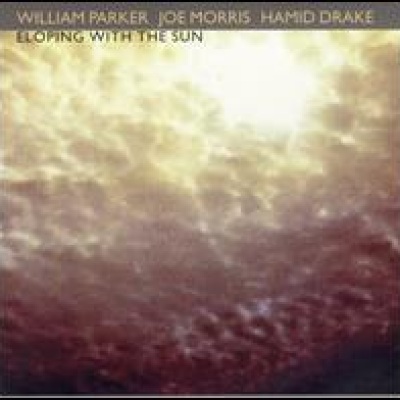
Eloping with the Sun
by Eugene ChadbourneThis delightful recording takes flight toward its solar elopement based on a very simple principle. Three musicians who play together regularly, much of their music totally improvised, get together for another recording session that will feature not their normal instruments but a variation that is deliberately stripped quite bare. Instead of electric guitar, Joe Morris brought his banjo and banjouke, the latter a bastardization that looks like a Mini-Me version of a banjo that can't get out of a ukulele jumper it was trying on. William Parker carted along something called a zintir, no doubt with great relief as it meant one less trip on the subway carrying his normal double bass. Hamid Drake was also no doubt gratified that this session required him to bring only a frame drum rather than an entire set of tubs. The zintir is a stringed instrument of sketchy origins, a variation on a quite basic design found in Africa, Asia, Arabia, and South America. These sorts of axes might have between two and four strings, sometimes less or more, and play in the bass register. Philosophically, then, Parker occupies a similar place in the ensemble sound. The same can be said for the other two players. Drake provides the percussion part of this rhythm section, and Morris agitates as the soloist on the top layer. In situations such as this, players often will create with much the same rhythmic gestures and manner of interaction as on their regular instruments, only the resulting sound comes out completely different. Anyone skeptical about this should be reminded of the difference between getting clocked on the forehead with a freshly sharpened pavement chisel or a piece of heavily salted Danish licorice. This instrumental concept means a much less heavy type of assault than is usual for these artists, yet this becomes a special treasure, a demonstration of expressive mastery packaged simply in a cardboard sleeve. It would be going too far to suggest the music represents a new acoustic hope for the future, but it is a stimulating experience nonetheless. If any criticism can be made, it is that the lack of much preconceived compositional direction gives some of the pieces a certain sameness. "Stepdance" and "Hop-Kin" are examples that simply seem like large squares of cloth someone has cut out of a massive quilt. One fades out with a bassline that comes back up again when the other begins. The 15-minute "Dream" is a wonderful performance.
